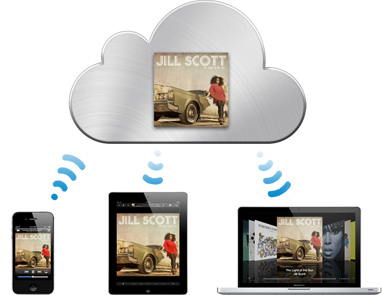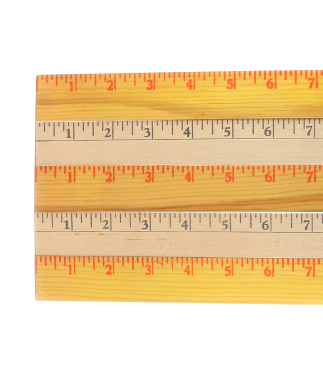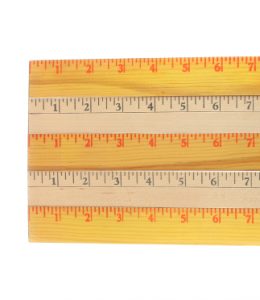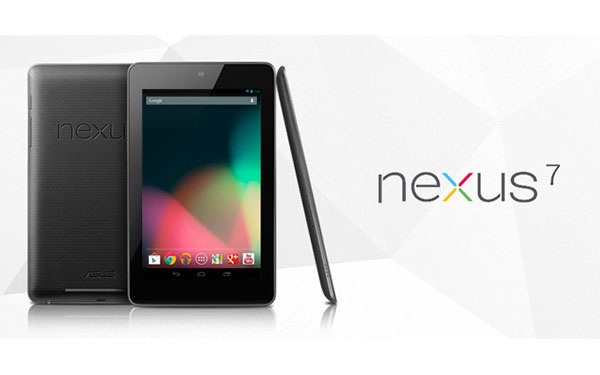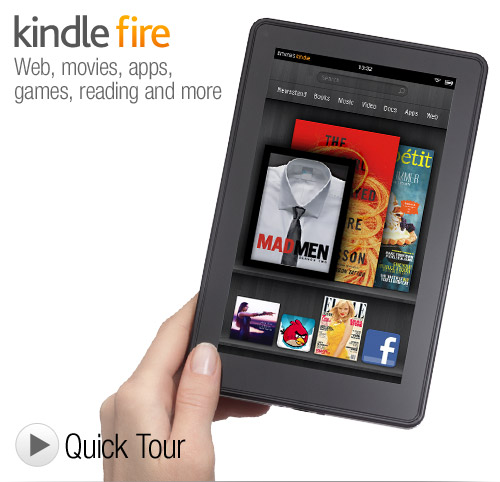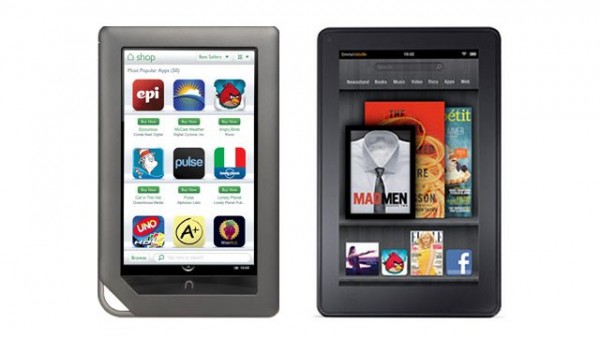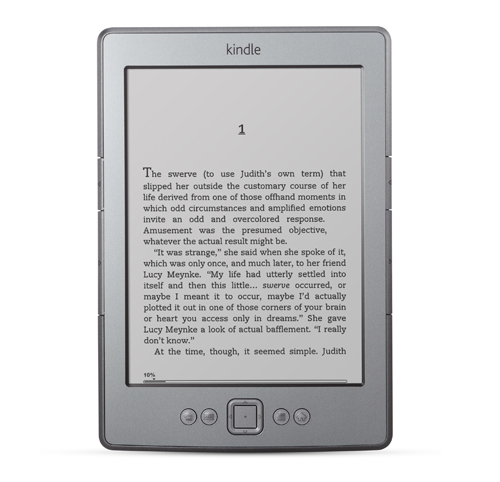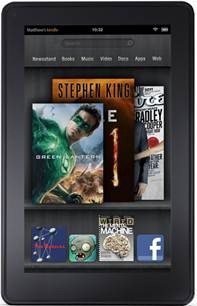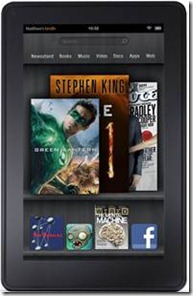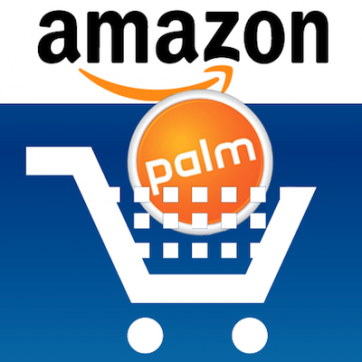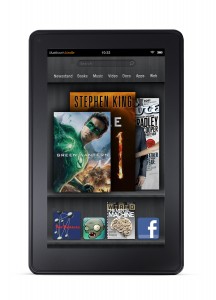RECAP
We’re looking at the tablet business models of Apple, Amazon, Google, Samsung and Microsoft. Today we focus on the Amazon Kindle Fire.
2.0 Amazon Kindle Fire
2.1 WHERE DOES THE AMAZON KINDLE MAKE ITS MONEY?
When introducing the new Amazon tablets, Jeff Bezos said:
“We want to make money when people use our devices, not when they buy our devices.”
Bezos’s description of the Amazon tablet business model would have been slightly more accurate if he had said:
“We want to make money when people BUY OUR CONTENT OR ACCESS OUR ADVERTISING, not when they buy our devices.”
Not as catchy, perhaps, but a tad more honest.
Bezos also said that he doesn’t believe in the razor/razor blade business model but I don’t know why because that is exactly the business model that the Amazon tablets are using. Amazon is selling their tablets (the razor) at or near cost and they are hoping to make their money from the sale of content and/or advertising (the razor blades).
Of all the tablet makers, Amazon is uniquely situated to make such a strategy work. While tablet makers like Apple, Google and Microsoft are interested in selling tablet owners tablets along with content such as music, books, television shows, movies and apps, Amazon is interested in selling their potential tablet customers EVERYTHING. Amazon has THE largest and most successful online retail store in the world. If Amazon can get you into their store and get you to buy things from their store, they win. To Amazon, the Kindle Fire isn’t so much a tablet as it is a vehicle designed take you to the Amazon store, keep you there and encourage you to spend your money there. It is just another form of advertising, marketing or promotion for the Amazon online store.
One of the brilliant “twists” to the Amazon strategy is that Amazon is saving money on software development by legally “poaching” their Amazon Kindle Fire operating system from Google’s open source Android. Google does all the work to create Android and then Amazon’s software engineers lift it whole and modify it to fit their specific needs. By the time Amazon’s software engineers are done modifying Android, their product barely resembles Android at all. In addition, they strip out all of Google’s money making properties and replace them with their own.
It must be particularly galling for Google to know that as they toil to make the Android operating system better and better, they are also toiling make Amazon’s competing tablet efforts better and better too.
2.2 WHERE DOES THE AMAZON KINDLE PROVIDE VALUE?
Amazon’s tablet hardware and software is much improved from last year’s offerings but where Amazon really brings value to their tablet customers is in the one-two combo of low tablet prices and an unsurpassed online shopping experience.
Amazon is able to keep their tablet prices low because they don’t intend to make any (or much) money on the initial sale of their devices. They can give their customers more tablet for less because they are making it up in content and advertisement sales. Amazon wants to lure you into their store with their tablet and then keep you there with their service and overall shopping experience.
And while it’s true that Amazon is making money off of you when you shop in their online store, people LIKE to shop at Amazon. Amazon’s selection is world class. Their prices are rock bottom. And their Amazon store software provides customers with one of the finest online shopping experiences anywhere.
A couple of quick analogies to drive home how the Amazon tablet business model works.
— If Amazon were a movie theatre, they would sell the tickets to the movies for cost and make their money on the sale of popcorn, soda and candy.
— If Amazon were in the game console business, they would sell their consoles at cost and make their money on the sale of the games.
— If Amazon were in the clothing business, they would sell T-shirts at cost, but they would put them in the back of their store in the hope that you would buy more of their other merchandise as you went to and fro in their establishment.
2.3 AMAZON KINDLE FIRE BUSINESS MODEL ADVANTAGES AND DISADVANTAGES
The advantage of the Amazon tablet business model is that their tablet prices are very attractive to a very large portion of the population. Further, Amazon doesn’t have to provide their customers with the latest or greatest hardware or software operating system in order to be competitive. Customers will overlook the Kindle Fire’s rough edges because they know that they are acquiring the tablet at bargain basement prices.
However, the Amazon tablet business model has some serious questions and some serious limitations too.
Does Amazon’s proposed business model even work?
As we said above, Amazon is using the give away the razor (at cost) and make your money on the sale of razor blades business model. But that model presupposes that the razor blades are being sold at a PREMIUM.
Famously, Amazon’s margins are razor thin (no pun intended) – as low as four percent. What good does it do Amazon to give away tablets for cost if they’re only making 4% profits on the sale of their content? It makes little sense. Yes, 4% is better than nothing and yes, they’ll make it up in volume but, as we’ll see, giving away tablets at cost is hardly risk free.
WHO
“The logic of selling a product which has a profit model unrelated to the cost of goods sold is tricky. The incentives are different. The risk is not selling too few but selling too many.” ~ Horace Dedeiu
Apple, Samsung and Microsoft don’t give a damn about WHO they sell their tablets to. They make their money up front, at the time of the sale. But Amazon has to be terribly careful WHO they sell their tablets to, WHERE their potential customers live, HOW their customers use their tablets and WHAT kind of demographic that potential tablet owner hails from.
WHERE
The Amazon store is currently only available in the United States, France, Germany, Italy, Spain, and the U.K. This means that few people outside of those countries would have any interest in purchasing an Amazon Kindle Fire. More importantly, Amazon has no interest at all in selling an Amazon Kindle to customers who don’t reside in those countries. In fact, they have a strong interest in NOT selling their tablets to those who cannot buy their content.
Remember, the Amazon tablets only make money from the sale of content or advertising. Contrary to the business models of Apple, Samsung and Microsoft, tablet sales numbers do not directly affect Amazon’s bottom line in any way.
And don’t expect Amazon to suddenly expand their services into other countries any time soon The Apple App Store opened in 2008 and Apple currently sells Apps in some 150 countries. But after a decade of expansion, iTunes still only sells content in 62 countries. Content distribution is hard. If it weren’t, Amazon would already be selling their content in far more countries than they currently are.
Simply put, Amazon’s geographically limited content distribution means that Amazon tablets can only compete with Apple, Google, Samsung and Microsoft in the United States and France, Germany, Italy, Spain, and the U.K. For those who are predicting that Amazon’s business model will destroy or put a serious dent in the business models of Apple and others, this should serve as a severe reality check. Even if Amazon does well in the geographic areas that they serve, Amazon tablets will do little to damage the overall sales numbers of their competitiors.
HOW
What Amazon tries to do with the brand is ensure that the Fire is in the hands of its most ravenous consumers. ~ Horace Dediu
Amazon is also interested in HOW their customers use their devices. It you buy an Apple, Samsung or Microsoft tablet and throw it in a drawer and never use it, those companies still make their money. If you take an Amazon tablet and throw it in a drawer, Amazon makes no money. So it’s not enough for Amazon to get their tablets into the hands of consumers, they have to get their tablets into the hands of consumers who will continue to use their tablets and continue to buy Amazon’s other goods and services.
This is analogous to the newspaper business. Newspapers could have dramatically increased their distribution by giving away their papers for free instead of charging for them. After all, newspapers made their money from the included advertisements and classified ads, not from the sale price of the newspaper. However, if newspapers were free, people who were not really interested in reading the newspaper would acquire them and use them for all sorts of unintended purposes such as lining bird cages or burning them for fuel.
Newspapers had to charge enough to drive away those who weren’t going to read the newspaper but not charge so much that they drove away their target audience. The Kindle Fire has the same dilemma. It needs to be priced high enough to scare off the cheapskates but low enough to attract the bargain hunters. That’s a very tough, very tricky balancing act.
WHAT
Finally, the Amazon model of giving away hardware cheap does not attract the most desirable customers. It does Amazon no good to attract lots of customers if they are money-grubbing, coupon-clippers who refuse to later purchase Amazon’s products or respond to Amazon’s ads. It’s not enough for Amazon to sell their tablets. They have to sell their tablets to people who have money and who are willing to spend that money in the Amazon store.
During the Amazon Kindle Fire introduction, Bezos also said:
“We don’t need you to be on the upgrade treadmill. If we made our money when people bought the device, we’d be rolling out programs left and right to try to get you to upgrade. In fact, we’re happy that people are still using Kindle Ones that are five years old.”
Well, OF COURSE Amazon is happy that people are still using old Amazon Kindles. That’s their business model.
Amazon makes no money from the sale of their hardware so they’re thrilled to have you continue to use their old hardware. They would like nothing more than for people to use their old hardware for as long as possible so that they don’t have to incur the expense of making and distributing newer hardware. However, this approach has some serious drawbacks and some serious risks.
First, tablets are a fairly new device category. Tablets based upon Apple’s touch metaphor are only two-and a half years old. Accordingly, the hardware is still rapidly improving.
While Amazon would like nothing more than to sell you a tablet and have you use it for 7 years — the same way that Microsoft, Sony and Nintendo sold their patrons game consoles and hoped that they would use them for 7 years — Apple, Samsung and Microsoft are following the exact opposite approach. They are iterating their hardware just as fast as they can.
With tablets, as in smartphones, consumers have shown a willingness to rapidly upgrade their hardware and then sell or pass down their legacy devices to others. Bezos speaks of the “Upgrade Treadmill” as a negative but no one is forcing consumers to buy new tablets. They WANT to buy new tablets in order to take advantage of the latest and greatest hardware and software advances. Although it is in Amazon’s best financial interest to slow down the upgrade cycle, I doubt that consumers are going to stand for that. At this stage in the tablet’s evolution, upgrading is a boon, not a curse.
Second, while a five year old device may be great for Amazon’s business model it’s terrible for Amazon’s platform efforts. Developers want to develop for a platform using a single operating system. (They never get that wish, but that’s what they want.) They want to provide their customers and potential customers with cutting edge software and they can’t do that if they’re forced to support 5 year old legacy devices. Amazon’s platform efforts are already far, far behind those of their tablet competitors and their business model makes it very unlikely that they will ever be able to catch up.
Amazon may have more content that its rivals, but when it comes to Apps, they are woefully behind. Amazon is upgrading their App portfolio as fast as they can but the total number of apps available to Kindle Fire patrons is still relatively low.
Further, Amazon has few large screen tablet optimized apps. Smartphone apps may be stretched to work on a 7 inch tablet but as tablet size increases, the need for tablet optimized apps increases too.
Creating a thriving platform is hard. Ask Amiga in the eighties. Ask Windows Phone 7 now. Developers want to make money and they’re not going to make money if their platform is attracting penny-pinching scrooges who don’t want to buy content but do want to hold on to their tablet hardware for 5 years or more.
The proposed Amazon tablets will be appealing to many consumers but it will also be unappealing to many more conservative groups. No government, business or scholastic organization is going to want to buy tablets that depend on advertising and which direct their constituents to the Amazon online store. Imagine, for example, legislators, or lawyers or students being given an Amazon tablet. It would be totally inappropriate for their purposes.
Amazon’s business model lowers the price of its tablets and broadens its appeal to the masses. But Amazon’s business model also precludes it from ever being adopted by organizations. This is a significant limitation that seriously crimps Amazon’s potential overall market penetration.
Amazon’s distribution channels are extremely limited. Most of their sales comes from their existing online Amazon customers. While this is a large pool, it’s a finite pool and it makes it difficult for Amazon to reach out to new, potential customers.
Further, Amazon’s distribution opportunities are actually becoming even more limited. Companies like Target and Walmart have recently stopped carrying Kindle devices because of perceived unfair competition.
Many, many people will buy a tablet unseen, untouched, and online. But the vast majority of people will not. Amazon’s unique distribution channel might be viewed as both a blessing and a curse. But mostly, it’s an impediment to the growth of their tablet sales.
Summation
Jeff Bezos has made it clear that he’s all in with tablets. I admire him as much as anyone in tech and if anyone can make Amazon’s strategy work, he’s the man who can do it. But, as we’ve seen, Amazon’s business model holds more questions than it provides answers. Pundits will gauge Amazon’s efforts by the number of tablets sold but the number of tablets sold is meaningless. The only thing that matters to Amazon is how much content and advertising revenue those tablets generate. And since Amazon is notoriously stingy with its revenue and profit numbers, it may be a long, long time before we know whether the Kindle Fire’s business model was brilliant or just bizarre.
We’ve now looked at the Apple and Amazon tablet business models. Tomorrow, we look at Google and the Nexus 7.




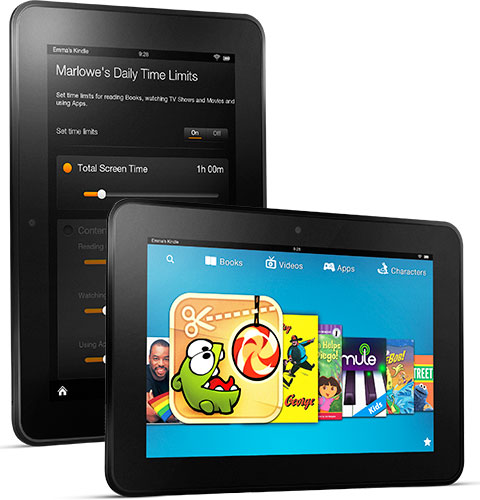



![Making the Cloud Safe for Consumers: Time for Apple To Step Up [Updated]](https://techpinions.com/wp-content/uploads/2012/04/whatis_icloud.jpg)
